The desert is a strange and beautiful place wherever in this world you would go. There are over 20 extensive deserts on our planet, and each one of them is different in its way. A desert is a place where difficult living conditions like lack of water, significant temperature differences between day and night, and high or low temperatures during the day make it into an unfriendly area.
At first glance, the desert is exactly as it sounds: a deserted area, which is why desert survival is quite different from surviving in the woods, where you can find wild food and water almost everywhere. However, at a second glance, you start to realize that even in the most unlivable conditions, some plants and animals enjoy calling that place home.
Usually, when you think about deserts, a wide area covered in golden sands comes to mind. Still, most deserts are mostly covered with rocks because the wind blows the small particles away. Moreover, there are two main types of deserts according to the predominant temperature. Thus we have hot deserts like Sahara and Atacama where the sun shines all day long and can kill, and adult, healthy men with its heat, and there are cold deserts like the Gobi with low temperatures.
Regardless of the type, deserts have a unique, magical beauty enticing us with incredible landscapes, curious creatures, and plants that are worth seeing at least once in a lifetime. This explanation comes in case you wondered why and how you would ever get in a deserted area. We can’t tell you how, but we can tell you that you will love it! More and more people discover the magical beauty of the desert and choose to spend their vacation here, exploring an unknown, exotic world.
A trip in the desert can be one of the most beautiful trips you’ve ever made in your entire life, so don’t be hasty in rejecting the idea. Even so, the desert is like a beautiful woman: mysterious, attractive, and filled with dangers. Unfortunately, the desert may mean the end of their journey for the unprepared ones. To be prepared for a desert survival situation, you must understand the environment (it’s very different from what you usually experience) and determine the necessary tactics you have to apply.
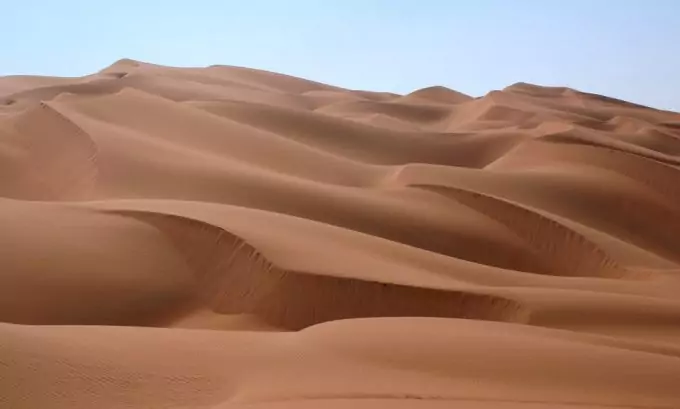
The environment is the first and most crucial enemy when you’re in a desert survival situation. Nothing is what it seems in the desert, and everything can be very confusing. It’s pretty scary to find yourself in the middle of a sand ocean and do not know which way to go. Try to imagine how you would react if your plane crashed in the Sahara desert. You have very little water, and there’s nothing else than sand to see for miles. Nobody knows where you are, and there are no means of communication. Do you think you will be able to make it out of this situation as a survivor?
Desert surviving requires a period of training and preparedness so you can develop unique skills that will help you get at the edge of the desert safe and sound. We gathered a few tips and tricks about surviving in the desert and what items you should have with you.
What you need to know before explore an arid area
You’ve finally decided that it’s time to see the desert for the first time, and you need to know what items should occupy a special place in your survival gear.
Most specialists recommend these items as necessary for a desert survival situation:
- Mobile phone – to keep communication lines opened. This way, in case something goes wrong, you can ask for help;
- Satellite phone – if you’re going deep into the desert you should have a backup for your phone. Many areas don’t have coverage and you shouldn’t risk your life based on a presumption;
- GPS – make sure the vehicle you are going to use has navigation. Also make sure that the GPS can guide you through the desert – we have a few great reviews for the best hiking GPS devices that you may want to check out.
- A personal beacon locator (PLB) – it may save your life when all communication systems fail. If you go deep in the desert and get lost, this beacon will send a distress signal with your position to the nearest rescue point;
- Water – if you’re traveling with a vehicle (which is recommended) make sure you have enough water for everyone. The main idea is to have at least one gallon per person, per day;
- First aid kit and proper medication;
- Flashlight with a set of extra batteries – it may be bright and sunny when you leave home but nights in the desert are as dark as nights everywhere. Keep in mind that this may be the only thing keeping you company during a very cold night so make sure to buy high quality batteries and a good flashlight. To find the best product, take a look at our reviews for the best survival flashlight.
- Sunglasses – these are extremely necessary when going on a desert trip. The glare from the powerful desert sun may impair your long distance vision and can give you headaches. Protect your eyes when you’re in the desert if you want to keep your eyes healthy;
- Lip gloss – it may sound a bit weird but some lip gloss can save you from cracked and ripped lips. Because of the dry air and heated sun, you’ll feel the need to moisten your lips. Don’t use your tongue because the dried saliva will make your lips get dry even faster;
- Proper footwear – make sure your feet are covered at all times. The ground is usually 30 degrees hotter than the surrounding environment so you wouldn’t want any part of your bare feet touching it.
- Proper clothing – make sure your entire body is covered. Wear white, large clothes that let your body breathe and keep your head covered at all times. During the day a covered head will be protected from the sun and during the night the cover will keep you warm. We have a great article discussing how to deal with layers of clothing in various situations that you can read here.
- Sunblock – to protect any exposed skin from sunburns. Don’t think that if your skin doesn’t get sun burns when you go to the beach, the same will apply here. The desert sun is extremely hot and it can actually kill a healthy, adult man.
- A knife – to protect yourself and to cut dried vegetation like cactus and grass. During the night you will want to make a fire to keep yourself warm which is when the knife will be very important. We have a great set of reviews for the best survival knife that you might want to check out.
- Firestarters and matches – because the air is always dry you will be able to find dry vegetation to light the fire. Make sure you dig a pit and protect the fire against the desert wind.
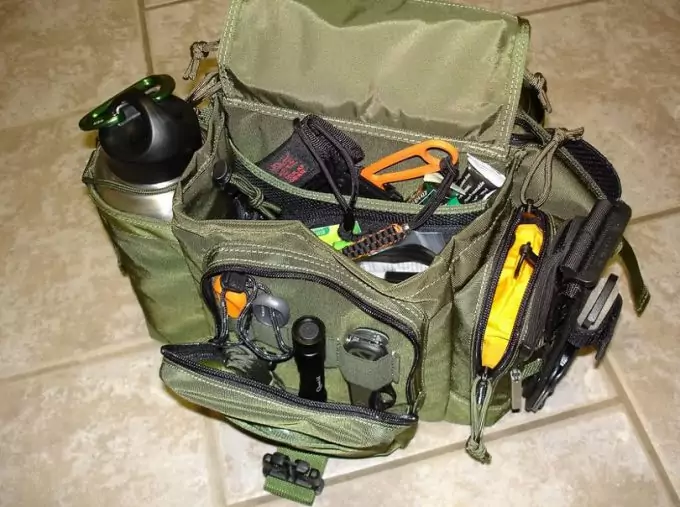
The below video explains what a basic desert survival kit should contain.
Actions and tricks you need to know
Now that you put together the essential items of your desert survival gear, you need to know a few tips and tricks on staying alive if you get lost in the desert. Make sure to remember them well, as they may be the only thing standing between you getting killed in the desert.
- The first rule of survival: share your plans with a person you trust. Let them know your route, the people you travel with, the vehicle you are going to use, what supplies you take, and so on. It may seem weird to share that much of your trip with another person but when it comes to finding you in the desert, every detail matters. One of the most important aspects is the type and color of your car. This way, a pilot will know what to look for.
- The second rule of surviving in the desert is to have the proper vehicle for driving in the desert. Take a vehicle that has offroad capabilities and that was tested in the desert. We know that you love your car and that you like to rely on it with every occasion but if you don’t have the proper car, the desert will not forgive you. It’s better to leave your car in the city and rent a proper, terrain vehicle.
- Test your vehicle before driving into the desert – there are no auto shops out there and no car services and you don’t want your car breaking down in the middle of a sand storm. Take it to a local shop and check that everything is in order.
- Always check to have a full tank of gas. If you can take extra (safely) then take, but the tank must always be full when you start your trip.
- In case your water supplies are limited don’t waste it. Keep your mouth closed, limit your activity, avoid eating as much as possible, don’t drink alcohol and don’t eat or drink anything salty. All these activities lead to dehydration which automatically leads to your organism asking for more water. Water is extremely important in an arid environment like the desert.
- If the worse happens and you do get lost, don’t leave your car. It’s the best shot you have at being found. Pop your hood and your trunk to signal distress (universal sign that pilots recognize) and point the mirrors to reflect light. A mirror reflecting a beam of light can be seen from miles away. Use the car to accommodate yourself and stay hidden from the sun. Use the car seats to sit down (never sit on the ground!) and try to keep your water as hidden from the sun as possible.
- Don’t remove your clothes thinking you will be able to lower your body temperature. The sun can burn your skin even through a thin layer of clothing so make sure you have a few layers to protect it.
- If you have to go through a dust storm cover your mouth with a cloth to keep dust particles from getting into your lungs. It’s very dangerous to inhale this dust.
- If you find a roadway, stay on it. If you’re lucky, someone will go by eventually.
- Be watchful for the weather. In the desert everything is inside out somehow. For example, you might think that it never rains in the desert and you will be surprised to find out that there are actually flash floods that come and go very fast. These temporary floods are very powerful but they happen on a very small area which doesn’t help the environment very much. Still, if you’re not careful with the weather, you may actually drown in the desert.
- Don’t drink all the water as soon as you feel thirsty. Remember, you are not in the city anymore and you can’t get any water in the desert. Try to rationalize every sip throughout the entire day. One or two sips of water are enough to make your lips moist and stop your thirst for a while.
- Don’t panic! Once you let your emotions free, you won’t be able to control yourself which can only lead to bad things. There’s always a solution if you stop and think about the situation. We know it’s frightening to see the sun shining over your head and nothing else but sand around you.
- Don’t eat too much! Eating makes you thirsty and sleepy because the body needs time to digest. Eat enough to keep your energy levels up but don’t eat to feel full. In case you have a limited ratio of water it’s better to not eat at all. You’ll resist much longer without food than you would without water.
Any experience desert adventurer will offer you one final piece of advice: respect the desert and understand it before blindly adventuring into it. It’s a vast area with all sorts of traps, dangers, and unknown situations.
How to find water in the desert?
Everyone knows that water is a scarce resource in the desert, and it’s better to have some with you than to hope for rain or an oasis. Still, if it happens to get caught in the desert without enough water to make it to the edge, there are a few creative ways to find the actual gold around here: water.
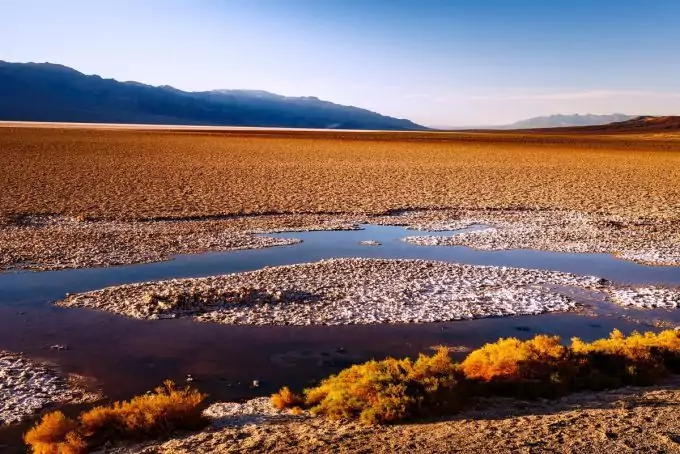
Read the following very carefully because you will want to remember it if you find yourself in a desert survival situation:
- Simply look for water. Get to hire ground (climb on a dune of sand or on a bigger rock) and look for reflections. In the arid sun, the water will shine like a diamond. It also helps if you have a pair of binoculars with you. You’ll see further away and if you’re lucky you’ll spot something useful.
- Look for signs of life – animals usually stay around water. Try to spot birds; they usually fly over areas where there is water. Knowing that doves or pigeons can’t survive without water is extremely useful in an arid desert area. Also bees only fly at about 1000m from a source of water. So keep your eyes and ears open!
- Look for vegetation – there can’t be vegetation without water so if you spot cacti or grass there is definitely some water around. Also, a hollowed tree root can contain water if there was a recent rain in the area. Make sure you know your vegetation so you can tell how far the water is from your location.
- Dried beds of rivers and lakes – the heat makes the water stay under the soil but very close to the surface. These dried beds will fill back up as soon as it rains. If you see any of these, dig a little under the surface and you should find water.
- Dew on plants – is a very good source of water when in big need. Just before the sun starts to shine again the coldness of the night forms drops of dew. You can use a cloth to collect the dew and then squeeze it into a container (or directly in your mouth).
- Cactus fruits – are juicy and can make you forget about thirst for a while. Make sure you know your cactus before trying to eat its fruits or drink its juice. Many species are highly toxic and will make you sick to the stomach.
As you can see, there’s water in the desert after all. You need to know how to look for it. Be aware that these tricks won’t offer you enough water to keep you away from dehydration.
Still, they may be enough to keep you alive, just enough to be found or to reach safety. Make sure to keep an open eye when looking for water because many other dangers are lurking in the sand. Scorpions, for example, also like to stay close to water sources, and they don’t want to be disturbed.
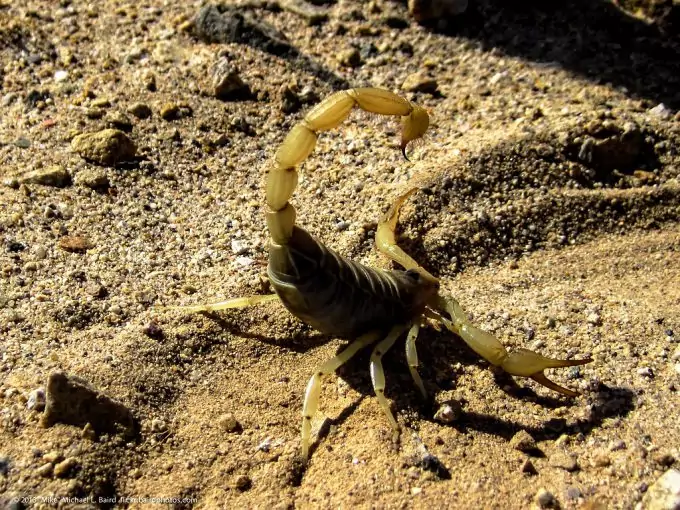
The conclusion that we can all take from all these is that a desert is a beautiful place that will test your limits to the maximum but, if you are strong enough to face it, you’ll be astonished by its beauty and grace. Therefore, the only recommendation we make regarding the desert is first to learn how to survive in the desert and then take a trip there.

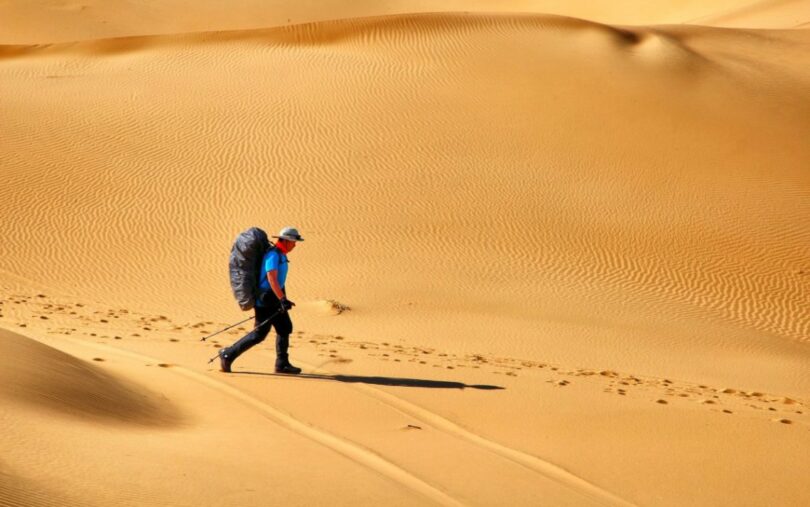

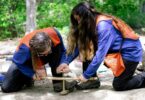


The desert is mysterious and magical as you say, and it is dangerous. I wish that you mentioned more animals other than scorpions, like snakes, lions, and even deadly plants.
Humans can learn to survive in the desert, as they did for centuries. The desert is fun, especially if you’re interested in Safari, I plan to make a trip.
That’s right, Frank. Anyone can survive the desert, all you need are desert survival skills and gear.
Snow is more my area of expertise, but it is interesting reading about desert survival.
I can only imagine the wealth of dangerous animals and hazards related to scorching sun.
Different terrains carry different dangers so it is important to be aware of all things that can possibly go wrong.
Thank you Peter for your opinion.